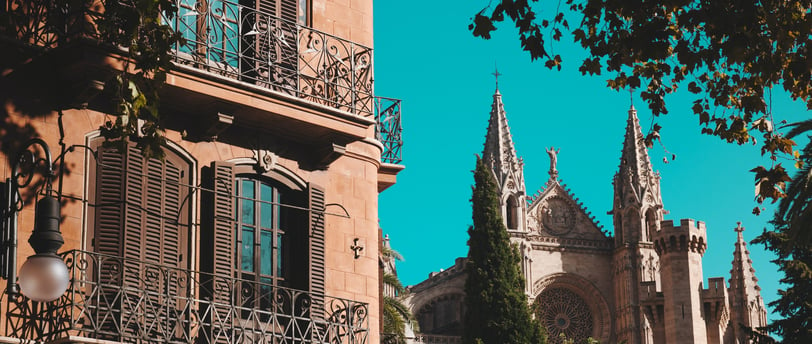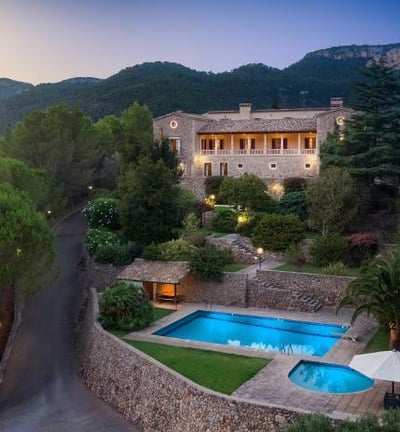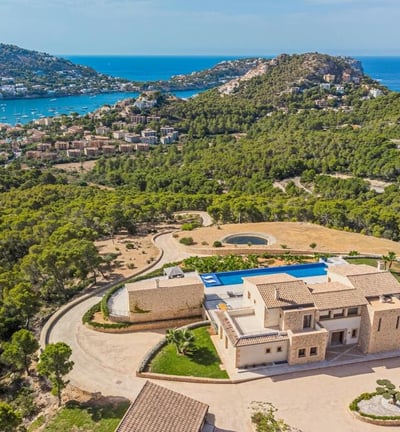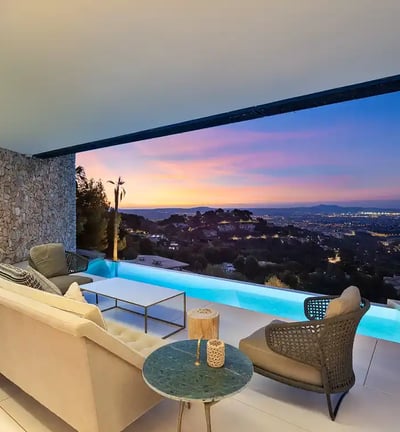Why is Majorca so expensive?.
5 min read


Introduction
Mallorca, a jewel in the Balearic Islands, is renowned for its stunning beaches, vibrant culture, and luxurious lifestyle. However, this idyllic island is also known for its high costs. From the chic streets of Palma to the serene mountain villages, the expense of enjoying Mallorca's charms can be considerable. This blog aims to unravel the factors behind Mallorca's reputation as a pricey destination. Whether it's the cost of accommodation, dining, or simply enjoying the natural beauty, we'll delve into what makes Mallorca a premium locale and whether its allure justifies the high price tag.
Geographical Factors
The geographical location of Mallorca, in the heart of the Mediterranean, significantly influences its cost of living. Being an island, the cost of transporting goods is higher compared to mainland Spain. This logistical challenge leads to increased prices for both basic necessities and luxury items. The island’s limited space also means less room for agriculture, making it heavily reliant on imports for food and other goods. Furthermore, the environmental protection laws, designed to preserve Mallorca's stunning natural beauty, often result in higher costs for construction and development, indirectly affecting the price of real estate and accommodation.
Tourism Demand
Mallorca's popularity as a tourist destination plays a pivotal role in its pricing. During peak seasons, demand skyrockets, leading to a significant hike in prices for accommodations, services, and activities. This demand-driven pricing is a common phenomenon in popular tourist spots. Hotels, restaurants, and tour operators often increase their prices to capitalise on the influx of visitors, particularly in sought-after areas like Palma, Pollença and Alcudia. Off-peak seasons see a dip in prices, but the overall cost remains higher than in less frequented Spanish destinations, reflecting the constant international appeal of the island.
Real Estate and Accommodation Costs
Mallorca's real estate market, one of Spain's most expensive, is distinguished by its variety of high-end areas attracting wealthy expatriates and celebrities. Places like Santa Ponsa and Port Andratx are coveted for their luxurious seafront villas. Old Town Palma offers a unique blend of historical charm with modern living, drawing in a high-end market. Deià and Sóller, known for their scenic beauty, command top prices. This range in property types and locations reflects the island's broad appeal. Accommodation options, from five-star resorts to boutique hotels, mirror this upscale market, resulting in higher prices than mainland Spain. The demand for exclusive experiences and high maintenance costs of these properties contribute to the elevated costs in both real estate and accommodation sectors.
Lifestyle and Exclusivity
Mallorca is synonymous with an upscale lifestyle, attracting the affluent with its exclusive clubs, marinas, and high-end boutiques. This exclusivity is a significant cost driver. The presence of luxury brands, designer stores, and gourmet restaurants, along with high-end services like private yachts and VIP experiences, cater to a market segment that is willing to pay a premium for exclusivity and privacy. This sector's spending power inflates prices, impacting the overall cost of living and visiting the island.
Local Economy and Living Standards
The local economy of Mallorca is heavily influenced by tourism, which accounts for a substantial part of its income. The standard of living is relatively high, with wages in the tourism and service industries often surpassing those in other parts of Spain. However, this economic prosperity is not uniformly distributed. The cost of living for residents, including housing, utilities, and groceries, is elevated due to the island's reliance on tourism and imported goods. This disparity is often reflected in the prices tourists encounter, from shopping to dining.
Transportation Costs
Travelling to and within Mallorca can be costly. The island’s popularity and remote location mean that flight prices, especially during peak tourist seasons, are high. Once on the island, the options for transportation include taxis, car rentals, and public transport, each with its pricing structure. Taxis are often particularly expensive, reflecting the high demand and limited availability. There are two main tariffs: Tariff 2 applies on weekdays from 7 AM to 9 PM, and Tariff 1 applies on Saturdays, Sundays, holidays, and from 9 PM to 7 AM on other days. Initial charges (Bajada de bandera) are €2.28 for Tariff 2 and €2.65 for Tariff 1, with higher rates during Christmas. The minimum fare, kilometre rates, and hourly waiting charges vary between these tariffs. Additionally, there are specific surcharges for airport trips and services on Christmas. For detailed rates and more information, please visit the Mobipalma website.
Public transportation, while more affordable, may not always cater to all tourist destinations, pushing visitors towards pricier private options.
Cultural and Entertainment Expenses
Mallorca's rich cultural heritage and vibrant entertainment scene offer a mix of high-end and budget-friendly experiences. While the island is known for its pricey historical sites, museums, and cultural events, which can add to a visitor's budget, there are also numerous free and inexpensive attractions to balance the costs. The nightlife in Mallorca, especially in areas like Palma and Magaluf, is famous for its club entry fees, high-priced drinks, and exclusive events. However, visitors can also enjoy free visits to landmarks like the impressive Palma Cathedral and the Royal Palace of La Almudaina, which offers free entry on certain days.
Moreover, the natural beauty of the island can be enjoyed at places like S’Hort del Rei Gardens, an urban oasis in Palma, and Cap de Formentor, known for its stunning cliffs and views, without any cost. Art enthusiasts can explore the Museum Foundation Juan March and the Es Baluard Museum of Modern and Contemporary Art, which have free entry policies on specific days or offer a pay-what-you-wish option.
Thus, while Mallorca can be a high-budget destination with its luxury leisure activities like boat tours, water sports, and guided excursions, it also provides plenty of opportunities for budget-friendly cultural and natural explorations
Food and Dining
Dining in Mallorca ranges from quaint street-side cafes to Michelin-starred restaurants. The cost of eating out reflects this diversity. While there are affordable options, the prevalence of gourmet dining and the high cost of importing food contribute to higher meal prices. The island’s reliance on imported goods, coupled with a focus on quality and locally sourced ingredients in higher-end establishments, drives up the cost of food, both in restaurants and supermarkets.
Environmental and Sustainability Considerations
Mallorca’s environmental policies, aimed at preserving its natural beauty, have financial implications. The emphasis on sustainable tourism often means higher costs for maintaining eco-friendly standards in hotels, restaurants, and other tourist facilities. These costs are usually passed on to consumers. Moreover, the island's commitment to protecting its environment can limit development in certain areas, reducing supply in the face of high demand and consequently driving up prices.
Comparative Analysis with Other Destinations
When compared to other Mediterranean destinations, Mallorca often emerges as a more expensive option. Factors like its popularity, geographical location, and the high standard of services contribute to this. While destinations like the Greek islands or the southern coast of Turkey offer similar natural beauty and cultural experiences, the cost of visiting and staying in Mallorca is typically higher. This price difference is particularly noticeable in the luxury segment of the market, where Mallorca's emphasis on exclusivity and high-end experiences sets it apart.
Conclusion
Mallorca's high cost can be attributed to a combination of geographical, economic, and market-driven factors. Its popularity as a luxury tourist destination, the cost of importing goods, and the island's commitment to sustainability and high living standards all contribute to its reputation as an expensive locale. However, the unique experiences, stunning landscapes, and rich culture that Mallorca offers can make the expense worthwhile for many.






